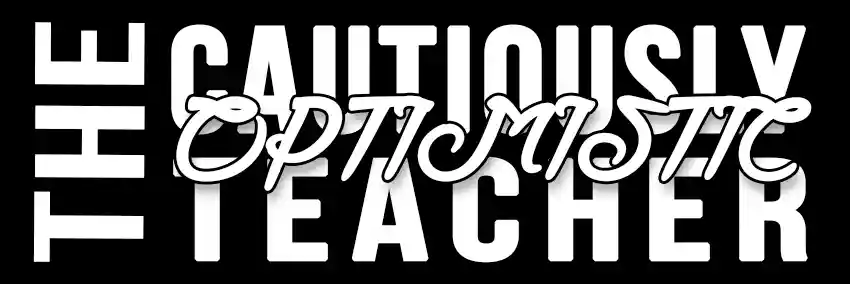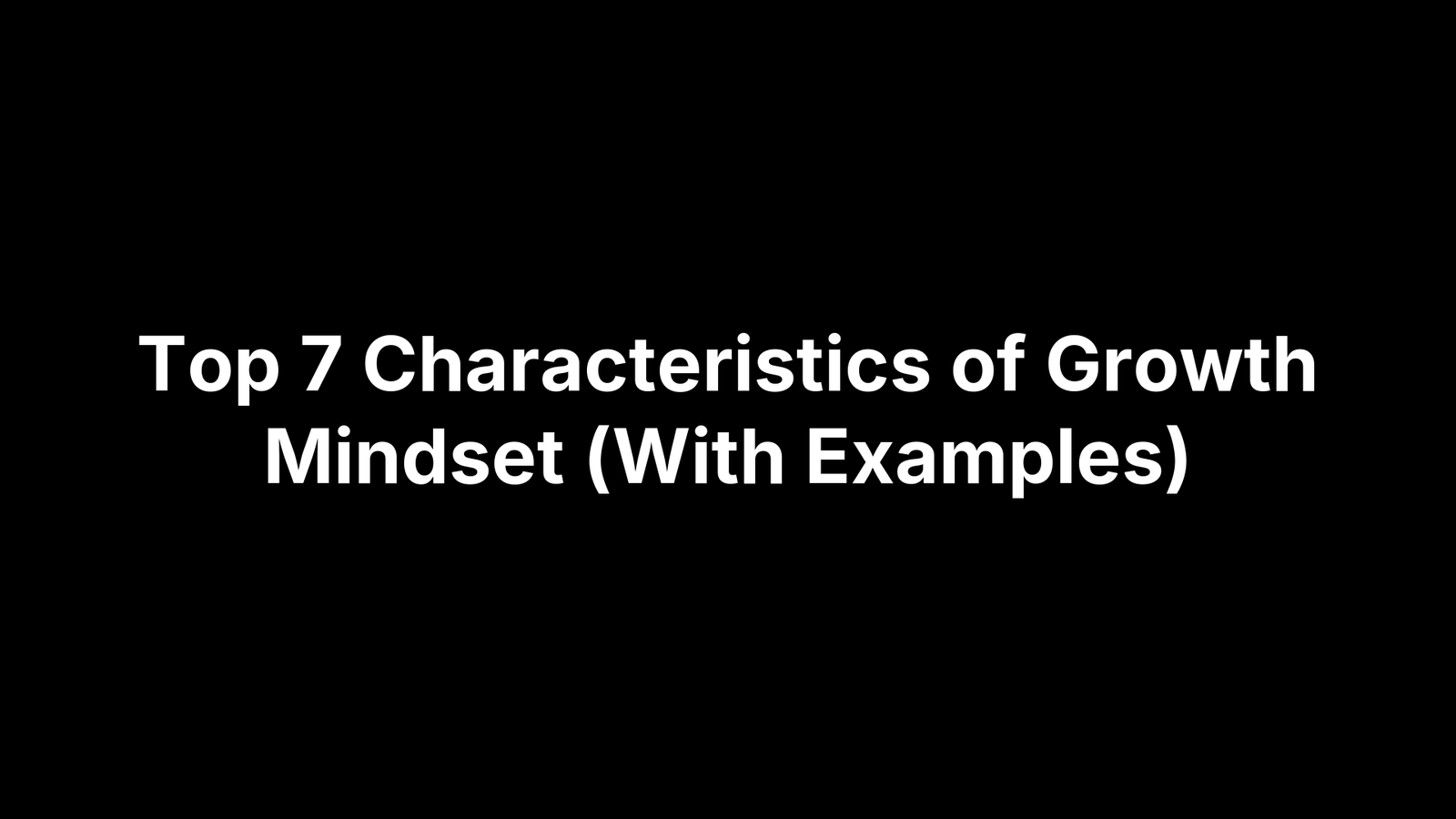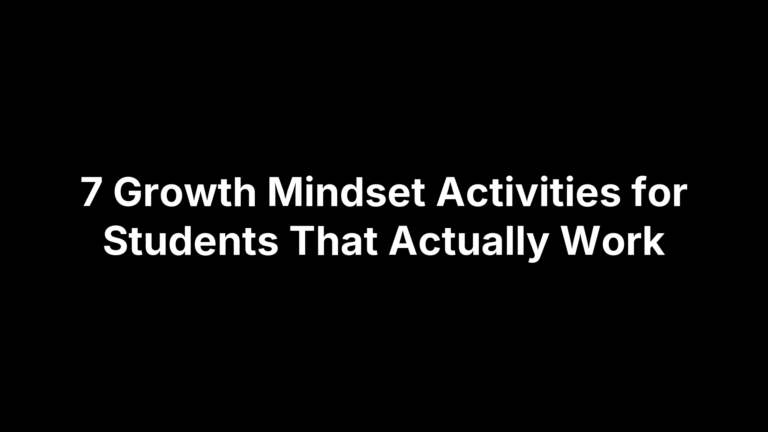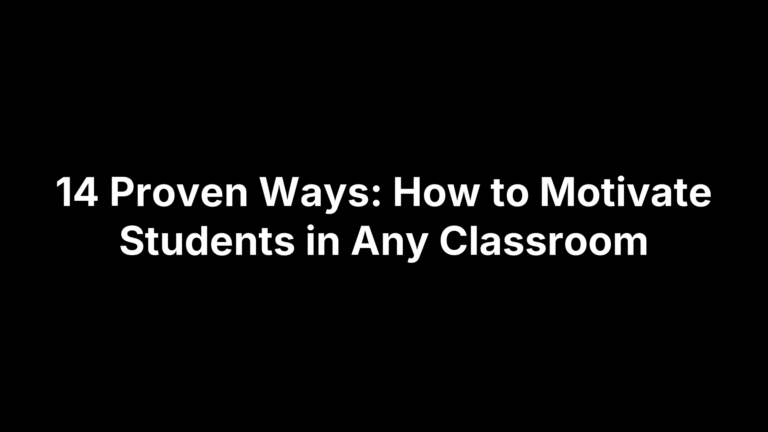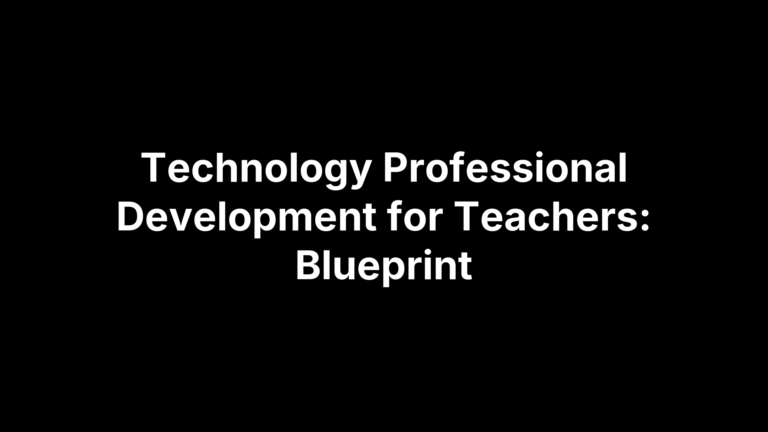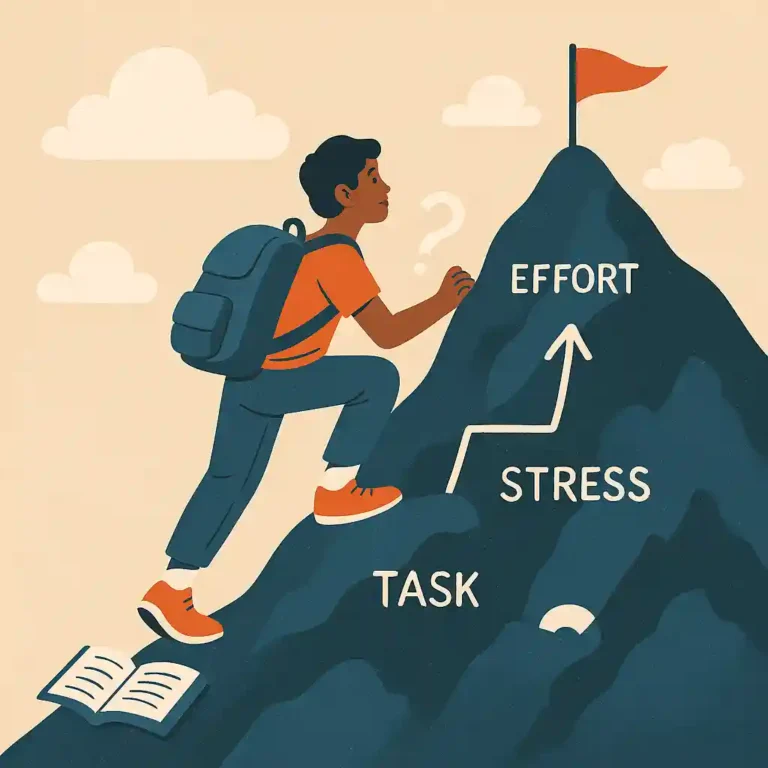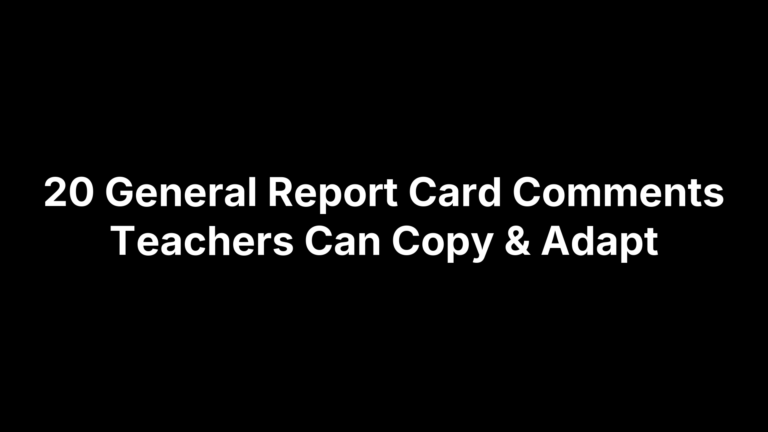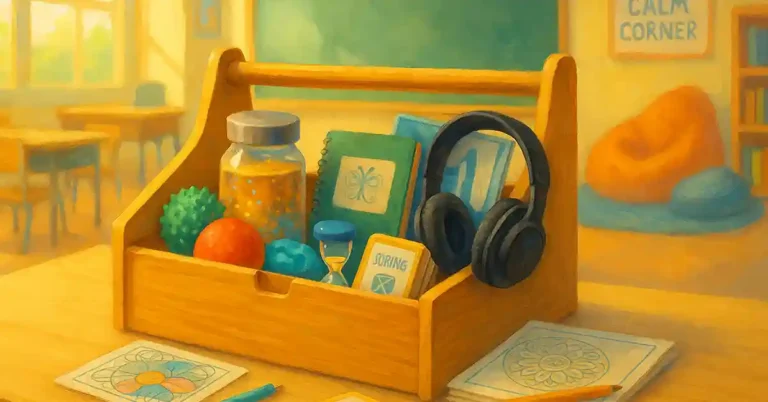Top 7 Characteristics of Growth Mindset (With Examples)
You want students who lean into hard things, but too often you hear “I’m just not a math person,” perfectionism stalls progress, and one mistake spirals into avoidance. Growth mindset posters are up, but translating the idea into daily habits—for you and your students—can feel fuzzy. What exactly should we look for, coach, and celebrate? And how do we build it into lessons without adding another prep?
This guide breaks growth mindset into seven concrete characteristics, each with: what it looks like (vs. a fixed mindset), why it matters for learning, and a quick “try this in your classroom” you can use tomorrow. You’ll get practical examples, language you can model, and simple routines and tools from The Cautiously Optimistic Teacher to make growth visible, assessable, and sustainable—across content areas and grade levels. Ready to make mindset a practiced skill rather than a poster? Let’s start with daily growth routines and reflection.
1. Practices daily growth routines and reflection (with The Cautiously Optimistic Teacher tools)
One of the most powerful characteristics of growth mindset is turning it into a habit: short, predictable routines that make effort, strategy, and reflection visible. When students expect to set a micro-goal, try a strategy, and name what they learned—every day—mindset shifts from slogans to skills you can see and coach.
What it looks like (vs a fixed mindset)
You’ll hear students set specific intentions, track which strategies they tried, and revisit work to apply feedback. They narrate their process (“I switched strategies after step 2”) instead of their identity (“I’m just bad at this”). A [fixed mindset](https://teachers-blog.com/growth-mindset-vs-fixed-mindset/) avoids challenge, hides errors, and treats outcomes as talent tests. Look for:
- Micro-goals + check-ins: “Today I’ll try two factoring strategies and compare results.”
- Language shift: “I can’t do this yet, so I’ll…” replacing “I can’t do this.”
- Visible iterations: Drafts with quick notes on what changed and why.
Why it matters for learning
Routines create evidence that abilities grow with effort, learning, and persistence—core to growth mindset research. They also build metacognition: students learn which strategies work, when to pivot, and how to use feedback productively. Over time, that consistency increases resilience, adaptability, and performance across subjects because students see progress as earned, not fixed.
Try this in your classroom
Start small and keep it daily. Use our Brain Builders Workshop as a 3–5 minute warm-up, then close with a one-minute reflection. Our Worksheet Maker can generate leveled practice for the goal you set, and the Differentiated Instruction Helper suggests next steps based on what students record.
- 2-minute Goal: “Today I will…” in a
Goal → Strategy → Evidencebox. - Strategy Log: Check the tactic used; the Question Generator can add quick prompts.
- Exit Ticket: “One mistake/feedback I used today was… which helped me…”
- Weekly Growth Snapshot: Students staple one before/after example; you draft a growth-focused note with the Report Card Commentor; they respond with next week’s plan.
2. Believes abilities and intelligence can grow
At the heart of the characteristics of growth mindset is a simple belief: with effort, feedback, and strategy, we get smarter. In practical terms, that means treating performance as a snapshot in time, not a verdict on talent. Research on growth mindset (Dweck) and learning shows that when students expect improvement, they persist longer, try more strategies, and learn more—because the brain forms new connections through practice and reflection.
What it looks like (vs a fixed mindset)
You’ll hear students talk about progress, not identity. They credit effort, strategies, and time-on-task instead of “being good” or “being bad” at a subject. They ask for help earlier and use it. A fixed mindset, by contrast, reads difficulty as a limit and avoids the stretch zone.
- Sees intelligence as developable: “I can grow this with practice” vs. “I’m not a math/reading person.”
- Credits process, not talent: “That method worked better; I’ll use it next time” vs. “I’m just naturally good/bad.”
- Uses the word ‘yet’: “I don’t get it yet, so I’ll try another strategy.”
- Seeks resources: “Show me how to improve this” vs. hiding errors or starting over from scratch.
Why it matters for learning
Believing abilities can grow changes effort decisions. Students take on challenges, view mistakes as information, and use feedback—behaviors linked to higher achievement and resilience. It also aligns with how learning works: with practice, the brain builds and strengthens connections, so strategies plus persistence reliably produce gains over time.
Try this in your classroom
Make the belief actionable and visible in short, repeatable moves.
- Progress Evidence: Keep a 2-column “Before → After” portfolio. Students label the strategy that produced the improvement.
- The ‘Yet’ Rewrite: Have students rewrite one fixed statement as a growth plan each week.
- Strategy Menu + Scaffolds: Use the Differentiated Instruction Helper to offer two alternate tactics; generate quick practice with the Worksheet Maker and prompts with the Question Generator to support the next attempt.
3. Embraces challenges and takes smart risks
Another hallmark among the characteristics of growth mindset is a willingness to step into the stretch zone—on purpose. This isn’t reckless; it’s strategic. Students learn to size up a challenge, plan supports, and accept that temporary discomfort is the price of progress, not a signal to bail.
What it looks like (vs a fixed mindset)
You’ll hear students naming the challenge level they’re choosing and why, along with a simple risk plan. A fixed mindset either avoids hard tasks or cherry-picks only what guarantees an easy win.
- Targets the stretch zone: “This option is hard because X; I’ll use Y support” vs. “I’ll do the easy one.”
- Plans the risk: Uses
Hypothesis → Strategy → Plan B → Stop timevs. diving in or opting out. - Frames struggle as data: “That was tougher than expected; next time I’ll…” vs. “I failed, so I’m done.”
Why it matters for learning
Embracing calibrated challenge builds resilience and adaptability—core outcomes tied to growth mindset research. Students who take smart risks persist longer, try more strategies, and recover faster after setbacks because difficulty is expected and managed. Over time, that approach compounds into higher achievement and confidence across content areas.
Try this in your classroom
Make “smart risk” a routine, not a pep talk.
- Challenge Ladder (3 tiers): Offer A/B/C versions of a task; students pick a stretch level and justify supports. Use the Worksheet Maker to create tiered sets.
- Risk Plan Card: Students complete
Hypothesis → Strategy → Plan B → Stop time; the Differentiated Instruction Helper suggests scaffolds matched to the task. - Two-Minute Debrief: “One risk I took… One thing I learned…” Use the Brain Builders Workshop or the Question Generator for quick reflection prompts that normalize challenge-taking.
4. Learns from mistakes and setbacks without shame
This characteristic of growth mindset reframes errors as information, not indictments. When students separate “I made a mistake” from “I am a mistake,” they’re free to analyze what went wrong, try a new strategy, and move forward. You’ll see this in classrooms where “favorite mistakes,” redos, and quick after-action reviews are routine and public—because setbacks are treated as part of the learning process, not something to hide.
What it looks like (vs a fixed mindset)
Students name the mistake, locate its cause, and plan the next attempt without self-blame. A fixed mindset hides errors, equates struggle with lack of ability, and starts over without reflection.
- Error-as-data talk: “My error was in step 3; next time I’ll check units first.”
- Visible revision cycles: Draft → notes on changes → improved draft pinned side-by-side.
- Normalized redos: “Try again” tickets are expected, not punitive.
- Setback stories: Students share what failed and what they changed.
- Self-compassion cues: “This was hard for me today; here’s my Plan B.”
Why it matters for learning
Seeing flaws and setbacks as opportunities aligns with growth mindset research: abilities develop through effort, learning, and persistence. When shame is removed, students persist longer, use feedback, and select better strategies—behaviors tied to resilience and higher achievement. Emotionally, reducing shame frees up cognitive resources; intellectually, error analysis pinpoints the exact misconception to target, accelerating progress.
Try this in your classroom
Make post-mistake routines short, predictable, and safe. Use our tools to keep the lift light and the focus on strategy.
- 60-second Error Analysis: Students complete
Mistake → Cause → Strategy → Next time. The Question Generator can create quick prompts for common errors. - Favorite Mistake Mini-Lesson: Showcase one anonymized error; model the fix and the reasoning.
- Redo Ticket:
What I changed → Why it’s better → What I’ll watch for next time. Generate targeted practice with the Worksheet Maker; add scaffolds via the Differentiated Instruction Helper. - Feedback-to-Growth Note: Use the Report Card Commentor to frame comments around strategies tried and next steps; students respond with a one-line plan in the Brain Builders Workshop.
5. Seeks and uses feedback to improve
Among the characteristics of growth mindset, the most coachable is turning feedback into forward motion. Growth-minded students seek precise input, ask clarifying questions, and convert notes into a revision plan; a fixed mindset hears feedback as judgment and defends or disengages.
What it looks like (vs a fixed mindset)
Look for learners who invite critique, name the change they’ll make, and return to show the update. They reference criteria, not identity. Fixed-mindset signals include arguing about points or only accepting praise.
- Specific asks: “Can you check my evidence in paragraph 2 against the rubric?”
- Translate feedback: Turns “explain more” into “Add a counterexample in step 3.”
- Revision receipts: “Before → After” with margin notes on what changed and why.
- Feedforward language: “Next time I will… because…”
Why it matters for learning
Feedback accelerates learning when students find value in criticism and stay open to others’ perspectives. It builds metacognition—what to fix and how—and strengthens resilience by reframing critique as information rather than threat, a core growth mindset behavior linked to better persistence and performance.
Try this in your classroom
Make a quick, predictable loop so feedback becomes action, not a pile of comments.
- 1–2–3 Loop:
Ask (1 min) → Receive (2) → Plan (3)usingGoal → Question → Next step. - Feedback codes: Use
E(evidence),CL(clarity),S(strategy),Q?(question) to mark work. - Revise with proof: Require a
Change → Why → Evidencesticky on resubmits. - Tool stack: Use the Report Card Commentor for strategy-based phrasing, the Question Generator for targeted prompts, the Differentiated Instruction Helper for next-step scaffolds, and the Worksheet Maker for quick, focused practice on flagged skills.
6. Values effort, strategies, and deliberate practice
Students with a growth mindset don’t just “try hard”—they try smart. They pair effort with clear strategies and focused, feedback-rich reps. That’s deliberate practice: working on a specific sub-skill, at the right level of challenge, with immediate feedback and another attempt. It’s one of the most actionable characteristics of growth mindset you can teach.
What it looks like (vs a fixed mindset)
Effort is purposeful, not busywork. Students can say what they’re practicing, why that strategy fits, and how they’ll know it’s improving. A fixed mindset treats effort as proof of low ability or keeps repeating the same approach.
- Names the target skill: “I’m practicing transitions between ideas, not the whole essay.”
- Chooses a strategy on purpose: “I’ll use a ‘point–evidence–explain’ frame this round.”
- Checks with criteria: “Did I meet the rubric’s clarity descriptor?”
- Iterates quickly: “One more rep with a tighter time box and a new example.”
Why it matters for learning
When students connect effort to specific strategies and quick feedback cycles, they see cause-and-effect in their progress. That boosts motivation, persistence, and adaptability—key outcomes tied to growth mindset research that views abilities as developable through effort, learning, and persistence. Deliberate practice makes gains visible and repeatable.
Try this in your classroom
Turn “work time” into targeted reps with short feedback loops and simple tools.
- Pinpoint the sub-skill: Use the Differentiated Instruction Helper to name 1–2 micro-skills to practice.
- Pick a strategy and rep count: Set
3 reps × 5 minuteswith a chosen tactic. - Feedback in codes: Mark each rep with quick tags (
Cclarity,Eevidence,Aaccuracy); the Question Generator can supply prompt stems. - Show the upgrade: Generate a tight practice set with the Worksheet Maker; students submit
Before → After → What changedand you craft a strategy-focused note with the Report Card Commentor.
7. Stays curious, asks questions, and adapts goals
Curiosity is the engine behind every other characteristic of growth mindset. Students who ask better questions notice patterns faster, spot gaps sooner, and feel safe saying “I don’t know—yet.” Just as important, they adjust their goals when new evidence appears, showing the adaptability linked with higher persistence and performance.
What it looks like (vs a fixed mindset)
Curious learners lead with inquiry, test ideas, and revise targets without taking it personally. A fixed mindset either avoids questions (“I should already know this”) or clings to a plan that isn’t working.
- Question-first talk: “What’s the first thing I need to understand?” and “What would happen if…?”
- Comfort with not knowing: “I don’t know yet; I’ll ask and try two examples.”
- Evidence-based pivots: “My quiz showed vocabulary is the bottleneck; I’m shifting this week’s goal.”
- Iteration cadence: Brief
Question → Try → Check → Updateloops visible on their work.
Why it matters for learning
A growth mindset values effort, learning, and persistence, and curiosity is what kicks that cycle off. Willingness to ask questions and admit uncertainty opens the door to feedback, while adaptability keeps effort aimed at the right target. Together, they strengthen metacognition and resilience so progress compounds across units.
Try this in your classroom
Bake inquiry and goal-tuning into quick routines and keep the lift light with our tools.
- 60-second Question Burst: Students list 3 “how/why/what if” questions; seed stems with the Question Generator and log one to the Brain Builders Workshop.
- Muddiest Point + Micro-test: Identify one confusion, then run a 3-minute check. Generate a focused item set with the Worksheet Maker.
- Goal Tuning Friday: Students complete
Result → What I learned → Updated goal. Use the Differentiated Instruction Helper to suggest next-step strategies and the Report Card Commentor to narrate the adaptation in growth-centered language. - Curiosity Cues on the wall: Post prompts like “What changed? What stayed the same? What’s the smallest test I can run?” and require one cue in every reflection.
Key takeaways
A growth mindset becomes real when students practice it every day. These seven characteristics turn posters into habits you can see: predictable routines, a belief that abilities grow, smart challenge-taking, shame-free mistake learning, active use of feedback, deliberate practice, and curiosity that adapts goals. Start small, make it visible, and coach the process.
- Daily routines + reflection: Micro-goals, strategy logs, quick exit reflections.
- Belief in growth: Progress portfolios and weekly “yet” rewrites.
- Smart challenge-taking: Choose stretch tasks and name supports and Plan B.
- Mistake → learning: 60-second error analysis, redos with “what changed.”
- Feedback into action: Specific asks, codes, and a revision receipt.
- Deliberate practice: Target a sub-skill, do short reps, get rapid feedback.
- Curiosity + goal tuning: Question bursts, muddiest point checks, Friday updates.
For ready-to-use routines and the AI tools mentioned, visit The Cautiously Optimistic Teacher and grab a template to pilot this week.
